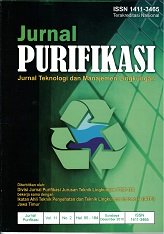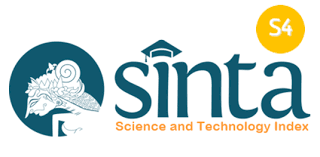PRODUKSI BIOGAS DARI ECENG GONDOK
Main Article Content
Abstract
Water hyacinth (Eicchornia crassipes) has high cellulose and hemicellulose contents and low lignin content. Therefore, water hyacinth biomass is very potential to be used as raw material for bioenergy production. This water weed is commonly found in eutrophied rivers and water channels, or harvested from waste water treatpent lagoons. This research is aimed to collect data and information on water hyacinth potential in producing bioenergy in the forms of biogas. This research is also aimed to determine the optimum condition for biogas productions, particularly the pretreatment methods and water hyacinth slurry and biostarter ratios. Research on biogas production was initiated by testing two types of biostarters. The intestine of terestrial snail and cow faeces were applied in different anaerobic reactors, which contained water hyacinth slurry. The best biostarter was selected for biogas production in anaerobic reactors at different water hyacinth slurry and biostarter ratios of 75/25, 50/50, and 25/75. Control reactors, which contained water hyacinth slurry, and other control reactors, which contained biostarter solution, also prepared. Optimum condition which can be recommended for biogas production from water hyacinth is as follows: water hyacinth slurry with COD value of 5000-6000 mg/L is mixed with cow faeces at water hyacinth slurry and biostarter ratio of 75/25, and retention time of 20 days.
Downloads
Article Details
Submission of a manuscript to Jurnal Purifikasi means that the work has never been published in another journal and is not under consideration for publication elsewhere. The author hereby agrees to submit the copyright of the manuscript and its contents to Jurnal Purifikasi, if accepted for publication. Accepted manuscripts will be published in printed form where the ISSN is bound in printed form, not in online form (pdf). Authors are not allowed to publish their work in other forms (journals) without permission from the Jurnal Purifikasi manager.
By submitting a manuscript, the author is deemed to know all the rights and obligations attached to each manuscript.








